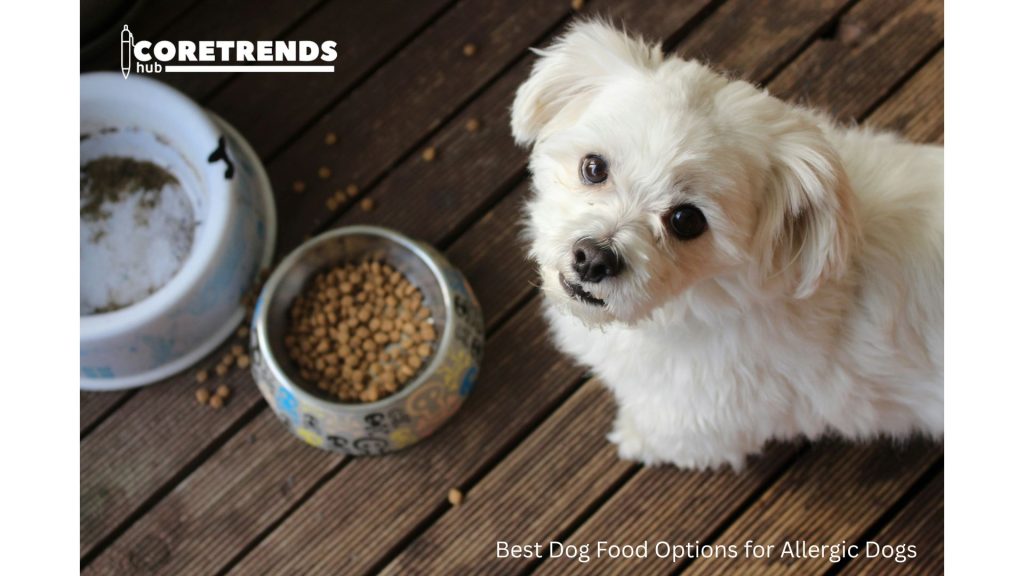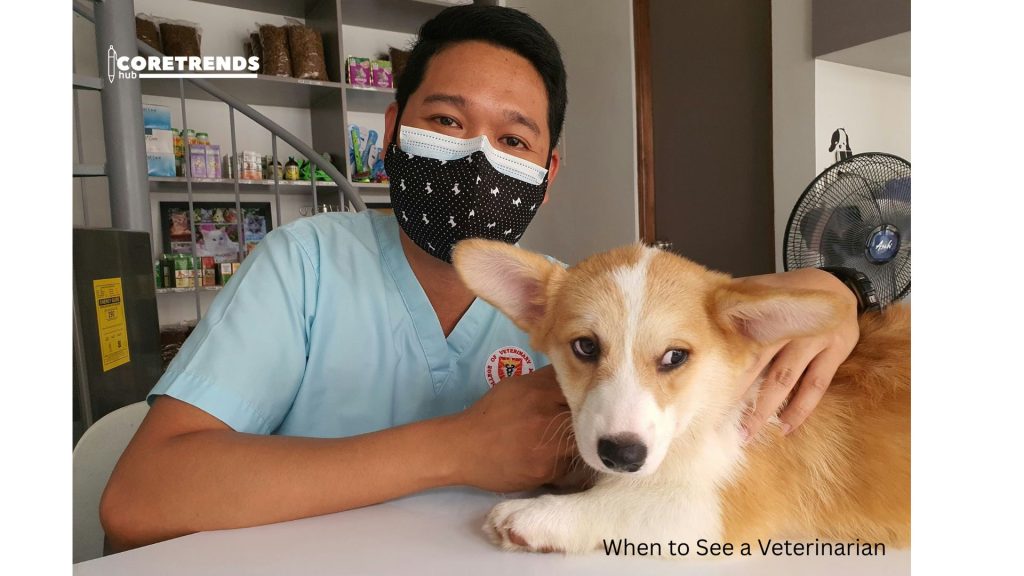It’s mealtime, and your dog is wagging their tail in excitement — but minutes later, they’re scratching, licking their paws, or shaking their head again. For many pet parents, these signs are all too familiar. What looks like a minor skin irritation or an ear infection can often trace back to something much simpler — your dog’s food. In the U.S., food allergies are one of the leading causes of chronic itching and discomfort in dogs, yet they’re often misunderstood or misdiagnosed.
The encouraging news is that with the right diet, you can make a world of difference in your pup’s well-being. This guide will walk you through how to recognize food allergies, identify safe and nutritious alternatives, and choose the best dog food for allergic dogs available in America today. With a little knowledge and care, you can turn mealtime from a source of irritation into a moment of health, happiness, and tail-wagging joy.
Table of Contents
Understanding Food Allergies in Dogs
A dog food allergy happens when your pet’s immune system mistakenly identifies certain ingredients as harmful invaders. Common signs include:
- Persistent itching, especially around the face, ears, and paws
- Recurrent ear infections
- Gastrointestinal upset — vomiting or chronic diarrhea
- Red, inflamed skin or hotspots
If these symptoms sound familiar, your dog may have a food allergy rather than an environmental one like pollen or dust.
Most Common Food Allergens in Dogs
Dogs can be allergic to almost any protein, but the usual suspects are:
- Beef – the most common allergen in dogs
- Chicken – widely used in commercial foods and a frequent trigger
- Dairy – many dogs are lactose intolerant
- Wheat and soy – some dogs react to gluten or plant-based fillers
- Eggs and lamb – less common, but still possible
Identifying which one causes the issue is key to solving the problem.
How to Identify Food Allergies
Identifying food allergies in dogs takes patience and a bit of detective work. The most reliable method is an elimination diet, where your dog is switched to a completely new protein and carbohydrate source for 8 to 12 weeks — something they’ve never eaten before. During this time, you’ll need to avoid all treats, table scraps, and flavored medications that could contain hidden allergens.
Common “novel” food combinations include venison with sweet potato, duck with pea, or salmon with potato. Some specialty brands even offer unique blends like kangaroo with oats for dogs with multiple sensitivities. Once your dog’s symptoms begin to clear up, you can slowly reintroduce their previous ingredients, one at a time, to identify exactly what’s causing the reaction. It’s important to do this process under your veterinarian’s supervision to ensure it’s both safe and effective.

5 Best Dog Food Options for Allergic Dogs
Now that you know the basics, let’s look at the best foods available in the U.S. for dogs with allergies — both prescription and over-the-counter options.
1. Hill’s Prescription Diet z/d
Formulated by veterinarians, this hydrolyzed protein food breaks down proteins into tiny fragments, making it nearly impossible for the immune system to react.
- Best for: Dogs with confirmed protein allergies
- Type: Prescription dry and wet food
- Where to buy: Through your vet or Chewy.com
2. Royal Canin Veterinary Diet Hydrolyzed Protein
This is another top pick from vets, especially for dogs with multiple sensitivities. It supports digestive health and skin barrier protection.
- Best for: Dogs with both skin and stomach reactions
- Available at: Vet clinics and online pet pharmacies
3. Purina Pro Plan Sensitive Skin & Stomach (Salmon & Rice Formula)
One of the most trusted non-prescription options. It uses salmon as the first ingredient and contains prebiotic fiber for gut health.
- Best for: Mild allergies or intolerances
- Bonus: Affordable and easy to find at Petco or Amazon
4. Blue Buffalo Basics Limited Ingredient Diet
Made with a single protein source (like turkey or salmon) and gentle grains like oatmeal.
- Best for: Dogs with unknown sensitivities
- Comes in: Dry and canned versions
5. Natural Balance L.I.D. Sweet Potato & Venison
A go-to for pet parents who prefer grain-free, limited-ingredient diets. It’s great for picky eaters and often recommended for elimination trials.
- Best for: Dogs with multiple food sensitivities
- Type: Grain-free dry kibble
Homemade Diets for Allergic Dogs
If commercial food isn’t working, some pet owners turn to home-cooked diets — but this must be done carefully. Dogs require precise nutrient balance. Always work with a veterinary nutritionist before starting.
Sample recipe base for discussion with your vet:
- Protein: Boiled salmon or turkey
- Carbohydrate: Sweet potatoes or brown rice
- Vegetables: Carrots, green beans, or spinach (steamed)
- Omega-3 source: Fish oil
Never add onions, garlic, or seasonings — these are toxic to dogs.
Raw and Freeze-Dried Alternatives
Some U.S. pet owners are exploring raw feeding or freeze-dried diets, claiming benefits for coat, digestion, and energy levels.
Reputable American brands offering allergy-friendly raw options include:
- Instinct Raw Boost Mixers (grain-free)
- Primal Pet Foods Freeze-Dried Nuggets
- Stella & Chewy’s Raw Coated Kibble
If you choose raw feeding, ensure it’s balanced, pathogen-free, and approved by your vet to avoid bacterial risks.
Tips for Transitioning to a New Diet
Changing your dog’s food too quickly can cause digestive upset. Transition gradually:
- Days 1–3: 25% new food + 75% old food
- Days 4–6: 50/50 mix
- Days 7–9: 75% new food
- Day 10: 100% new food
Keep track of itching, stool consistency, and overall mood. A simple notebook or pet health app can help track improvements.
Supplements That Can Help
Some dogs benefit from added nutrients that support skin and immune health:
- Omega-3 fatty acids – reduce inflammation (found in salmon oil or flaxseed oil)
- Probiotics – balance gut bacteria and improve digestion
- Vitamin E and zinc – aid skin repair
Always confirm dosage with your vet.

When to See a Veterinarian
If your dog’s symptoms persist even after dietary changes, it may be time for:
- Blood tests or intradermal allergy testing
- Prescription anti-allergy medications
- Specialized therapeutic diets
Never ignore chronic scratching or ear infections — they can lead to secondary bacterial or yeast infections.
Conclusion: Feed with Love and Awareness
Caring for a dog with food allergies takes time, patience, and a bit of trial and error — but it’s entirely achievable. Thanks to the wide range of high-quality hypoallergenic dog foods available across the U.S., you can easily find options that keep your pup healthy, comfortable, and excited for mealtime again. Once you discover what works, those endless scratching sessions and digestive upsets can quickly become a thing of the past.
Always remember that no two dogs are the same. The best food for your allergic dog isn’t defined by the most popular brand but by what truly nourishes your pet’s unique body. Listen to your dog, work closely with your vet, and make feeding an act of love — one that brings your furry companion lasting comfort, energy, and joy.
Frequently Asked Questions (FAQ): Best Dog Food for Allergic Dogs
Q1. How do I know if my dog has a food allergy or food intolerance?
A food allergy triggers the immune system — leading to itching, ear infections, and red skin. A food intolerance usually causes digestive issues like gas, bloating, or diarrhea without immune reaction. A vet-guided elimination diet helps identify which one it is.
Q2. What is the best protein for dogs with allergies?
Many allergic dogs do well on novel proteins like venison, duck, rabbit, or salmon — ingredients they haven’t eaten before. Hydrolyzed protein diets (where proteins are broken down) are also effective for highly sensitive dogs.
Q3. Can I feed my allergic dog raw food?
Yes, but with caution. Raw diets can work for some allergic dogs, especially when made from limited ingredients. However, raw food can carry bacterial risks like Salmonella or Listeria. Always consult your vet and choose reputable U.S. brands that follow safety standards.
Q4. How long before I see improvement after switching food?
Typically, 8–12 weeks of consistent feeding are required to notice visible improvements in skin, coat, and digestion. Avoid treats or table scraps during this period to ensure accurate results.
Q5. Are grain-free diets better for allergic dogs?
Not necessarily. Most food allergies are to proteins, not grains. However, if your dog is sensitive to wheat, a limited-ingredient or grain-free formula may help. Always base your choice on actual diagnosis rather than marketing claims.
Q6. What human foods can dogs with allergies safely eat?
In moderation, dogs can enjoy carrots, apples (without seeds), blueberries, sweet potatoes, and plain cooked chicken or turkey — unless allergic to those proteins. Always introduce new foods slowly and avoid onions, garlic, grapes, and chocolate.
Q7. Should I give my dog allergy supplements?
Yes, supplements like Omega-3 fatty acids, probiotics, and vitamin E can help soothe itchy skin and strengthen immunity. Ask your veterinarian about safe dosages and reputable brands.



